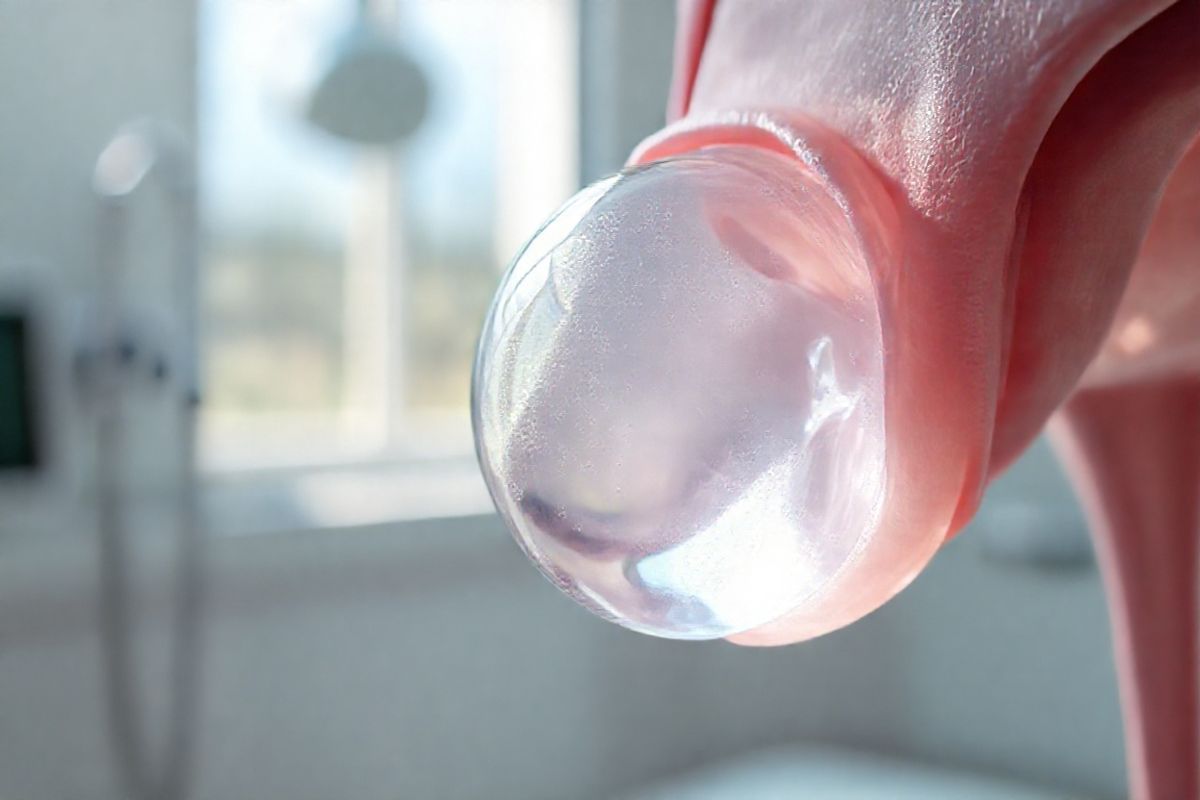Table of Contents
Understanding Ovarian Cysts: What Are They and How Do They Form?

ovarian cysts are typically benign (non-cancerous) and often form as part of the normal menstrual cycle. The ovaries, which are responsible for producing eggs and hormones, can develop two main types of functional cysts: follicular cysts and corpus luteum cysts. Follicular cysts occur when the follicle that contains an egg doesn’t rupture and release the egg during ovulation. Instead, it continues to grow and fills with fluid. Corpus luteum cysts form after the egg has been released; if the sac doesn’t dissolve properly, it can fill with fluid.
Other types of cysts include dermoid cysts, which contain various tissues like hair and fat, and endometriomas, which are associated with endometriosis and can cause significant pain and complications. The most common type, functional cysts, usually do not require treatment as they resolve on their own within a few menstrual cycles (Healthline, 2023).
TablTypes of Ovarian Cysts
| Type of Cyst | Description | Potential Impact on Fertility |
|---|---|---|
| Functional Cysts | Follicular and corpus luteum cysts related to ovulation | Generally do not affect fertility |
| Dermoid Cysts | Contain various types of tissue | Rarely affect fertility |
| Endometriomas | Associated with endometriosis | Can lead to infertility |
| Cystadenomas | Formed from ovarian tissue, can be benign or malignant | May affect fertility if large |
The Connection Between Ovarian Cysts and Fertility Challenges
The relationship between ovarian cysts and fertility is often misunderstood. While most ovarian cysts are harmless and do not impede a woman’s ability to conceive, certain conditions can lead to fertility challenges. For instance, Polycystic Ovary Syndrome (PCOS) is a common hormonal disorder that causes the ovaries to produce numerous small cysts. This condition is characterized by irregular periods and hormonal imbalances, which can hinder ovulation, making it difficult to conceive (Mayo Clinic, 2021).
Additionally, some types of cysts, particularly endometriomas, can cause significant pain and scarring within the reproductive organs, potentially leading to complications with fertility. Women with endometriosis often face challenges related to cysts and adhesions that can obstruct the fallopian tubes or affect the uterine environment necessary for implantation (WHO, 2023).
TablImpact of Ovarian Cysts on Fertility
| Condition | Effect on Fertility |
|---|---|
| Functional Cysts | Minimal to no impact; usually resolves on its own |
| PCOS | Can lead to irregular ovulation and infertility |
| Endometriomas | Can cause pain and scarring, potentially impacting fertility |
| Cystadenomas | Rarely affect fertility unless they are large or malignant |
Types of Ovarian Cysts and Their Potential Effects on Reproductive Health
Understanding the various types of ovarian cysts is essential for assessing their impact on fertility. Here are some common types:
- Follicular Cysts: The most prevalent type, generally harmless and often resolved naturally.
- Corpus Luteum Cysts: Formed after ovulation, usually benign and also tend to resolve.
- Dermoid Cysts: Rare, contain different tissues (e.g., hair, teeth), and typically do not affect fertility.
- Endometriomas: Associated with endometriosis and can significantly impact fertility due to scarring and adhesions.
- Cystadenomas: These can be benign or malignant and can affect fertility depending on size and location.
The presence of these cysts may lead to symptoms such as pelvic pain, bloating, and changes in menstrual cycles, which can complicate the diagnosis of fertility issues. For women experiencing these symptoms, it is crucial to consult a healthcare provider for appropriate evaluation and management (NHS, 2023).
TablSymptoms Associated with Ovarian Cysts
| Symptom | Description |
|---|---|
| Pelvic Pain | Can range from mild discomfort to severe pain |
| Bloating | Feeling of fullness or swelling in the abdomen |
| Irregular Menstrual Cycles | Changes in the frequency or duration of periods |
| Pain during Intercourse | Discomfort or pain during sexual activity |
Recognizing Symptoms: When to Seek Help for Ovarian Cysts

It’s important for individuals to recognize when symptoms may warrant medical attention. Symptoms that may suggest an ovarian cyst requires evaluation include:
- Severe pelvic pain
- Pain during sexual intercourse
- Abnormal bleeding or changes in menstrual patterns
- Symptoms of pressure on the bladder or bowel, such as frequent urination or difficulty emptying the bowels
A healthcare provider may perform imaging tests, such as ultrasound or MRI, to diagnose the presence of cysts and determine the best course of action based on their size, type, and associated symptoms (Cleveland Clinic, 2023).
Treatment Options for Ovarian Cysts: Preserving Fertility and Health
Most ovarian cysts do not require treatment and resolve on their own. However, if a cyst is large, persistent, or causing significant symptoms, treatment options may include:
- Observation: Regular monitoring through ultrasound to assess changes in size or symptoms.
- Medications: Hormonal contraceptives can help regulate the menstrual cycle and prevent the formation of new cysts.
- Surgery: In cases of large or symptomatic cysts, surgical options include laparoscopy (minimally invasive) or laparotomy (more invasive) to remove cysts while preserving ovarian function (NHS, 2023).
TablTreatment Options for Ovarian Cysts
| Treatment Option | Description | Impact on Fertility |
|---|---|---|
| Observation | Regular monitoring without immediate intervention | None, unless cysts persist |
| Hormonal Medications | Use of birth control to regulate cycles | Can assist in fertility |
| Surgical Intervention | Removal of cysts through laparoscopy or laparotomy | Preserves fertility if done carefully |
FAQ Section
What are ovarian cysts?
Ovarian cysts are fluid-filled sacs that develop on the ovaries, typically as a part of the menstrual cycle.
Do ovarian cysts affect fertility?
Most ovarian cysts do not affect fertility. However, certain types, such as those associated with PCOS or endometriosis, can create challenges in conceiving.
How are ovarian cysts diagnosed?
Ovarian cysts are often diagnosed through pelvic exams and imaging tests such as ultrasounds or MRIs.
What treatment options are available for ovarian cysts?
Treatment options may include observation, hormonal medications, or surgical intervention, depending on the size and symptoms of the cyst.
When should I see a doctor about ovarian cysts?
Seek medical advice if experiencing severe pelvic pain, significant changes in menstrual cycles, or symptoms suggestive of complications.
References
- Healthline. Ovarian Cyst: Symptoms, Causes, Treatment and More. https://www.healthline.com/health/ovarian-cysts
- Mayo Clinic. Female infertility. https://www.mayoclinic.org/diseases-conditions/female-infertility/symptoms-causes/syc-20354308
- World Health Organization. Infertility. https://www.who.int/news-room/fact-sheets/detail/infertility
- Cleveland Clinic. Infertility: Types, Causes, Symptoms, Diagnosis & Treatment. https://my.clevelandclinic.org/health/diseases/16083-infertility
- NHS. Causes of infertility. https://www.nhs.uk/conditions/infertility/causes/










